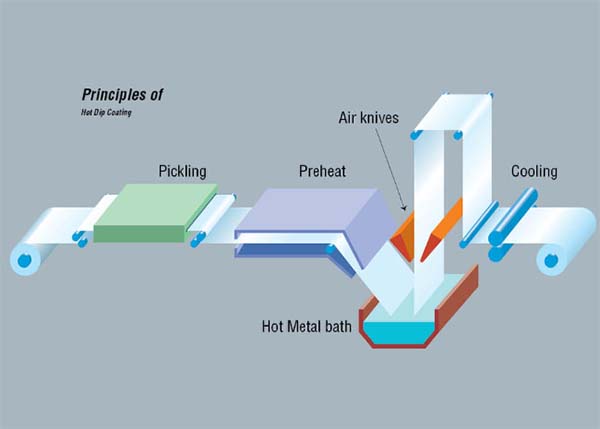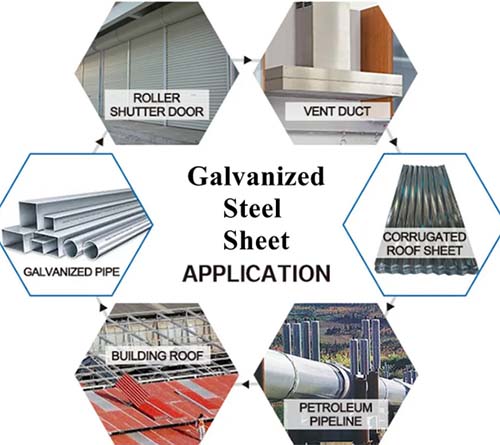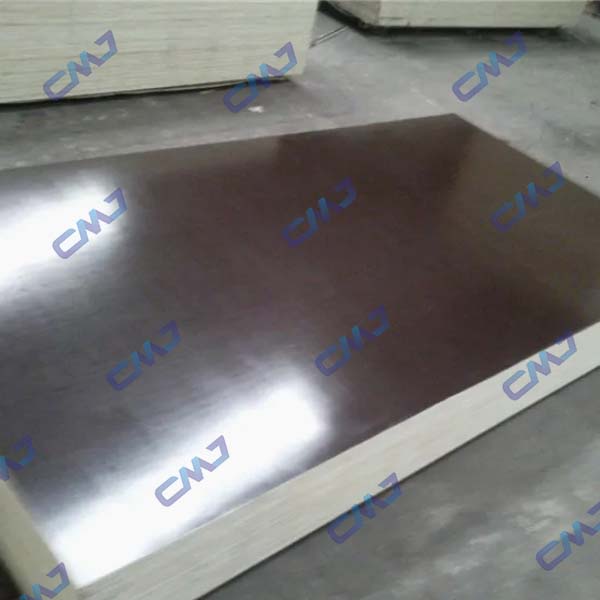Q195 Steel Equivalent, Properties, and Q195 vs Q235 Comparison
814Learn the Q195 steel equivalent grades (ASTM, JIS, EN), compare Q195 vs Q235 properties, and how to source Q195 steel plate or coil at wholesale prices.
View detailsSearch the whole station
Galvanized steel sheets are a core material in global infrastructure and manufacturing, valued for their exceptional corrosion resistance, structural strength, and versatility. Their widespread adoption spans civil construction, transportation, agriculture, energy, and white goods industries. This article presents a comprehensive analysis of galvanized steel sheet products—covering production methods, international standards, mechanical properties, typical use cases, and considerations for industrial sourcing.
Galvanized steel is produced by coating carbon steel with a layer of zinc, typically through hot-dip galvanizing. This process significantly improves the steel’s resistance to corrosion and atmospheric oxidation. Zinc coating not only serves as a barrier against environmental exposure but also offers cathodic protection, whereby the zinc sacrifices itself to protect the underlying steel if the coating is damaged.
The longevity of galvanized steel sheets is one of their key advantages, with lifespans exceeding 20–50 years depending on coating thickness and environmental exposure.
In this process, steel sheets or coils are immersed in molten zinc at approximately 450°C, forming a metallurgical bond between the zinc and the base metal. The resulting zinc-iron alloy layers provide excellent adhesion and wear resistance, making this method ideal for structural and outdoor applications.

This technique uses electrical current to deposit a thin layer of zinc onto the steel surface. It results in more uniform and aesthetically pleasing coatings, though with less corrosion resistance compared to HDG. Electro-galvanized steel is often used in electronics and automotive inner panels.
Most galvanized sheet products are produced using continuous lines that combine rolling, annealing, cleaning, and galvanizing in a single integrated process. This ensures consistency in coating thickness, surface finish, and dimensional control.
Galvanized steel is typically processed and supplied in the following formats:
| Form | Thickness Range (mm) | Width Range (mm) | Description |
|---|---|---|---|
| Galvanized Steel Sheet | 0.30 – 3.00 | 600 – 1500 | Flat panels used in construction and enclosures |
| Galvanized Steel Coil | 0.30 – 3.00 | 600 – 1500 | Coiled form, suitable for slitting or roll forming |
| Galvanized Steel Plate | 3.00 – 25.00 | 1000 – 2500 | Heavy-duty material for structural applications |
Sheets are favored in roofing, siding, and interior fabrication, while coils allow for easy transport and processing. Plates are used in structural members, bridge decks, and machinery supports.
Several global standards govern the quality and performance of galvanized steel. Commonly referenced specifications include:
| Standard | Country/Region | Common Grades | Applications |
|---|---|---|---|
| ASTM A653 | USA | CS Type A/B, SS Grade 33–80 | General & structural steel work |
| JIS G3302 | Japan | SGCC, SGCD, SGCE | Deep drawing, forming, bending |
| EN 10346 | Europe | DX51D+Z, S220GD–S550GD | Structural steel, roofing systems |
| IS 277 | India | Designations by coating mass | Utility and general fabrication |
Grades differ in mechanical strength, ductility, and coating weight. Coating designations such as Z100 or Z275 refer to the total zinc mass per square meter.
The performance of galvanized steel is directly influenced by the weight and consistency of its zinc coating. Typical coating levels include:
| Coating Grade | Zinc Mass (g/m²) | Use Case |
|---|---|---|
| Z60 | 60 | Indoor structures, short-life components |
| Z120 | 120 | Automotive, residential roofing |
| Z275 | 275 | High-corrosion zones, coastal buildings |
The galvanized steel sheet price is influenced heavily by the coating weight and base steel grade. Thicker coatings provide better durability but may affect weldability and forming properties.
The underlying steel substrate determines the mechanical performance of galvanized steel. Below are typical values for widely used grades:
| Grade | Yield Strength (MPa) | Tensile Strength (MPa) | Elongation (%) |
|---|---|---|---|
| DX51D+Z | ≥140 | ≥270 | ≥22 |
| SGCC | ≥205 | ≥270 | ≥18 |
| S350GD+Z | ≥350 | ≥420 | ≥20 |
Buyers must select grades based on their forming, welding, or load-bearing requirements.
Galvanized steel is integral to multiple industries due to its adaptability and longevity:

Its resistance to weathering makes it suitable for both commercial and residential buildings.
Galvanized components reduce rust-related repairs and extend vehicle service life.
The conductive and protective properties of zinc coatings enhance the safety and reliability of such components.
Coated steel prevents rust under high-humidity or manure exposure.
| Material | Corrosion Resistance | Cost | Formability | Common Use |
|---|---|---|---|---|
| Galvanized Steel | Moderate to High | Moderate | Good | Construction, fabrication |
| Galvalume Steel | Very High | Moderate | Moderate | Roofing, marine structures |
| Aluminum | Very High | High | Excellent | Transportation, marine |
| Electro-Galvanized | Low to Moderate | Moderate | High | Appliances, electronics |
Each coating system is optimized for specific environments and service conditions.
Galvanized steel sheets may be processed further to improve aesthetic or functional characteristics:
Buyers can request surface customization based on intended application or regulatory compliance (e.g., RoHS).
Reliable suppliers provide thorough testing and quality documentation:
| Test/Parameter | Purpose |
|---|---|
| Coating Thickness Test | Confirms zinc mass uniformity |
| Adhesion Test (peel or bend) | Evaluates bonding between coating and base |
| Salt Spray Test (ASTM B117) | Assesses corrosion resistance |
| Mechanical Properties (UTM) | Confirms tensile and yield performance |
| Dimensional Tolerances | Ensures width, length, flatness accuracy |
Certificates such as Mill Test Reports (MTRs), SGS or BV inspections may be required for customs or third-party verification.
Large volume orders can be shipped via bulk vessel or break bulk, particularly for heavy plates or oversized coils.
For global buyers, choosing the right galvanized steel sheet manufacturer involves evaluating:
| Factor | Description |
|---|---|
| Production Capacity | Line width, annual output (important for large orders) |
| Certifications | ISO 9001, CE, SGS, BIS, or UL, depending on region |
| Customization | Coating weight, cut-to-length, packaging type |
| Export Experience | Countries served, documentation support |
| Response Time | Ability to quote quickly and ship fast |
If you’re searching where to buy galvanized steel, check whether the supplier offers support for shipping, customs, and multi-format delivery.

CJM is an experienced exporter of galvanized steel sheet and coil, offering:
CJM maintains long-term partnerships with fabricators, traders, and project contractors across Asia, the Middle East, Africa, Europe and America.
👉 CJM is your trusted partner. Click to check our various series of pre-painted steel sheet and contact our team to send your need.
Galvanized steel sheets remain one of the most reliable and economical solutions for corrosion-resistant fabrication. Their versatility, availability in standardized forms and grades, and suitability for a wide array of applications make them indispensable in modern industry.
By understanding coating systems, material standards, mechanical behavior, and supply logistics, international buyers can confidently source galvanized products that meet both technical and commercial expectations.
For quotes, technical datasheets, or consultation on galvanized steel solutions, reach out to CJM’s professional export team.
Email: info@cjmstainlesssteel.com
WhatsApp: +86 18191906640
Learn the Q195 steel equivalent grades (ASTM, JIS, EN), compare Q195 vs Q235 properties, and how to source Q195 steel plate or coil at wholesale prices.
View detailsDiscover the main low alloy steel grades and HSLA steel types used in construction and machinery. Learn their properties and advantages for global projects.
View detailsLearn about ASTM A615 rebar: chemical composition, yield & tensile strength of Grades 40, 60, 75, common applications, ASTM A706 comparison, norma ASTM A615.
View detailsGuía completa sobre la placa de acero esmaltado: características, usos industriales y diferencias frente a otros materiales.
View details
HelloPlease log in